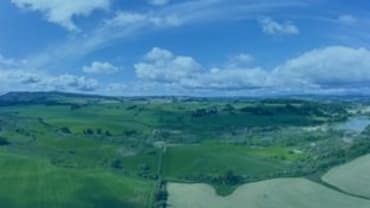The Crofting Register is a public map-based register of crofts and common grazings. Land can be voluntarily registered by the owner (who may be an owner occupier or a landlord) or registration can be triggered by certain events such as sale or assignation of the croft land.
The effect of registration in the Crofting Register is that the land becomes subject to crofting tenure regardless of the status of the land prior to the first registration. From a neighbouring landowner's perspective, it is therefore important that the boundaries of the land are correct.
On an application for registration being made, landowners of adjacent land will be notified by the Crofting Commission. The notification will include a plan of the area of croft land which the application relates to.
On receipt of notification, an individual will have nine months from the date of the notification to challenge the registration. The challenge should be made to the Scottish Land Court which can (a) make an order that the entry in the register be removed; (b) make an order that the entry in the register be modified; or (c) make no order. A challenge submitted after the expiry of the nine month period may "on cause shown" be heard as if it had been submitted timeously. Any late application to challenge a croft registration will have to justify the reason for the delay and these reasons will be scrutinised by the Land Court.
A neighbour can therefore seek to challenge the application where it is apparent that the croft boundaries are incorrect. In a recent Land Court case, a neighbour sought to challenge the registration of a croft on the basis that the area being registered encroached on his land. The challenge to the registration was submitted seven months after the expiry of the nine month period.
The neighbour had checked the notification that was sent to him at the time. On the face of it, the application appeared to show the neighbour's property excluded from the subjects being registered. However, the lack of scale on the neighbour's title plan meant that it was difficult for the neighbour to compare the application to the Crofting Register with his title plan. The discrepancy with the boundaries only came to light when plans were being drawn up by the neighbour's surveyor to support an application for planning permission. The Land Court accepted this explanation for the late challenge.
If the Land Court had rejected the explanation for the late challenge by the neighbour, the neighbour's remedies would have been to:
- Approach the landlord of the croft directly (in this case, the application for registration had been submitted by a landlord not an owner occupier) and ask for the error to be amended by them through an application for rectification of the register. The problem with this remedy is that the rectification application needs to be submitted by the croft landlord and therefore the parties would need to be in agreement regarding the error affecting the neighbour's land; or
- Apply to have the land that was erroneously registered resumed from crofting tenure. This application would be made by the neighbour whose land has incorrectly been registered in the Crofting Register.
The proceedings before the Land Court were put on hold to allow the parties to explore whether the matter could be resolved administratively in terms of the first remedy set out above, to avoid further expense for the parties.
The Land Court observed that this case had disclosed circumstances which were not exclusive to the parties and may affect many owners of land held on older titles with poor quality plans situated in crofting areas. It could be many years before these errors come to light and this may result in significant delays in dealings relating to the land.











